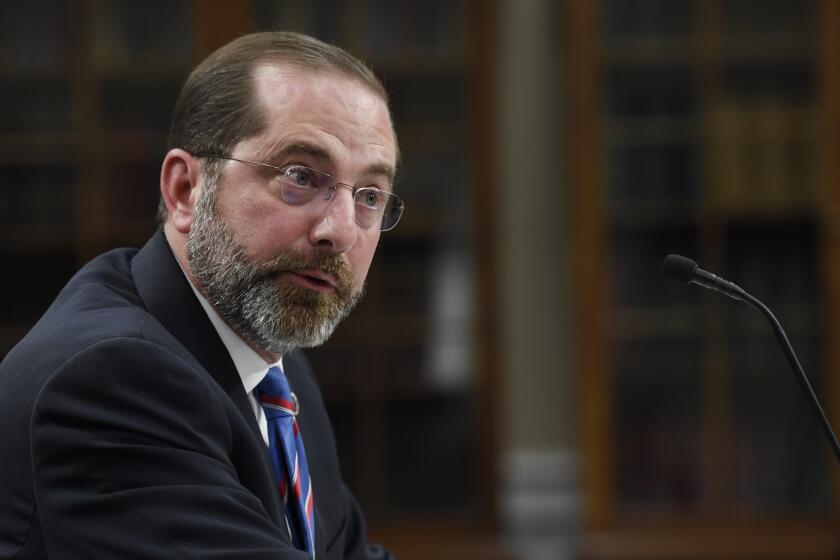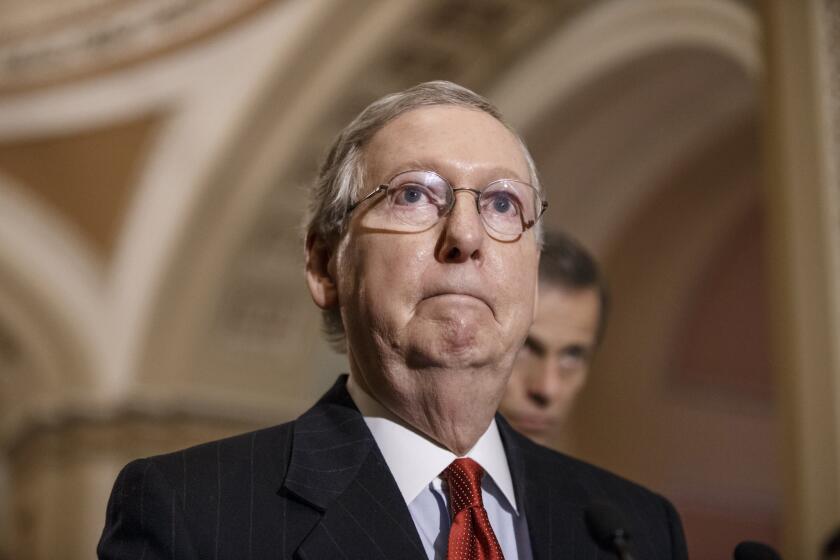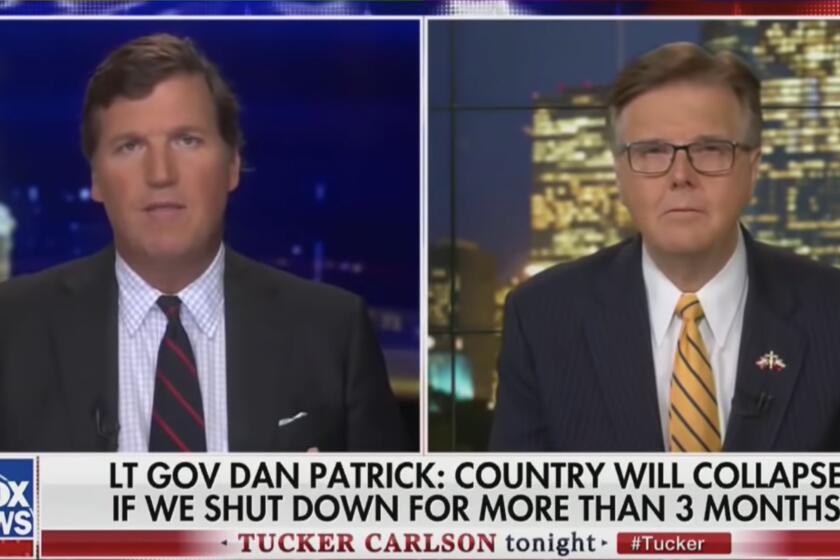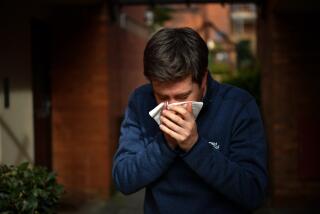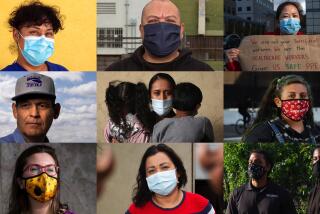Column: America’s pathetic sick leave policies are killing our coronavirus response
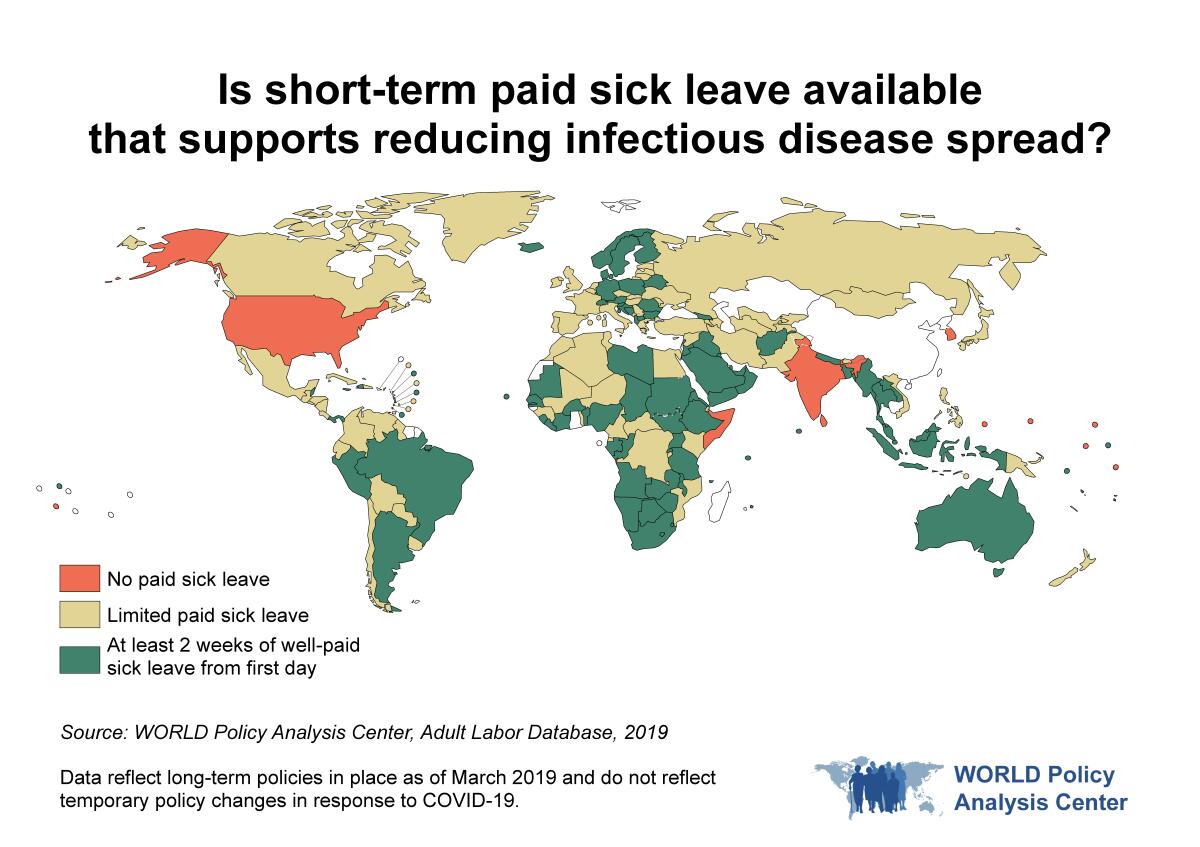
- Share via
If you’re looking for an area in which the United States is indisputably a global standout, here it is: paid sick leave.
Unfortunately, not in a good way. Of United Nations member countries, 181 provide paid leave in some form. Eleven do not, including the U.S.
That places America in an elite group that includes the Pacific Island nations of Tonga, Tuvalu, and Nauru, along with Somalia (which is barely a functioning nation at all).
When you exempt big companies and small companies, you’re missing vast swaths of the country. Why would we possibly do that during a pandemic?
— Jody Heymann, UCLA
One developed country, South Korea, doesn’t provide paid sick leave as such, but does provide all workers with three weeks of paid time off that can be used as sick leave.
“We are incredibly isolated,” says Jody Heymann, director of the World Policy Analysis Center at UCLA and the lead author of a newly published study by the center of sick leave policies in 192 of the 193 UN countries. (The study didn’t cover North Korea, where policies couldn’t be determined.)
The center determined that the U.S. lags much of the world in almost every measure of sick leave design.
Although the initial coronavirus relief measure passed by Congress — the Families First Coronavirus Response Act enacted in mid-March — provided for two employer-paid weeks of emergency medical leave, it exempted businesses with 500 employees or more and allowed small businesses with fewer than 50 workers to claim hardship exemptions.
By limiting sick leave and free healthcare, the U.S. system will promote the spread of coronavirus.
That made the U.S. the only country in the world that bases its paid leave rule on the size of an employer, Heymann told me.
“The big picture story is that when you exempt big companies and small companies, you’re missing vast swaths of the country,” Heymann says — an estimated 100 million workers. “Why would we possibly do that during a pandemic?”
The lack of nationally mandated paid sick leave is both penny- and pound-foolish even under normal circumstances, Heymann says. “Paid sick leave pays for itself in increased productivity and fewer work hours lost due to disease,” she says.
In a regular non-pandemic year, influenza costs the U.S. economy $11 billion, and food-borne disease another $15 billion, including what’s spread by food workers reporting to their jobs while sick. The Centers for Disease Control and Prevention reported in 2016 that one in five food service workers had worked at least one shift while sick with vomiting or diarrhea in the previous year.
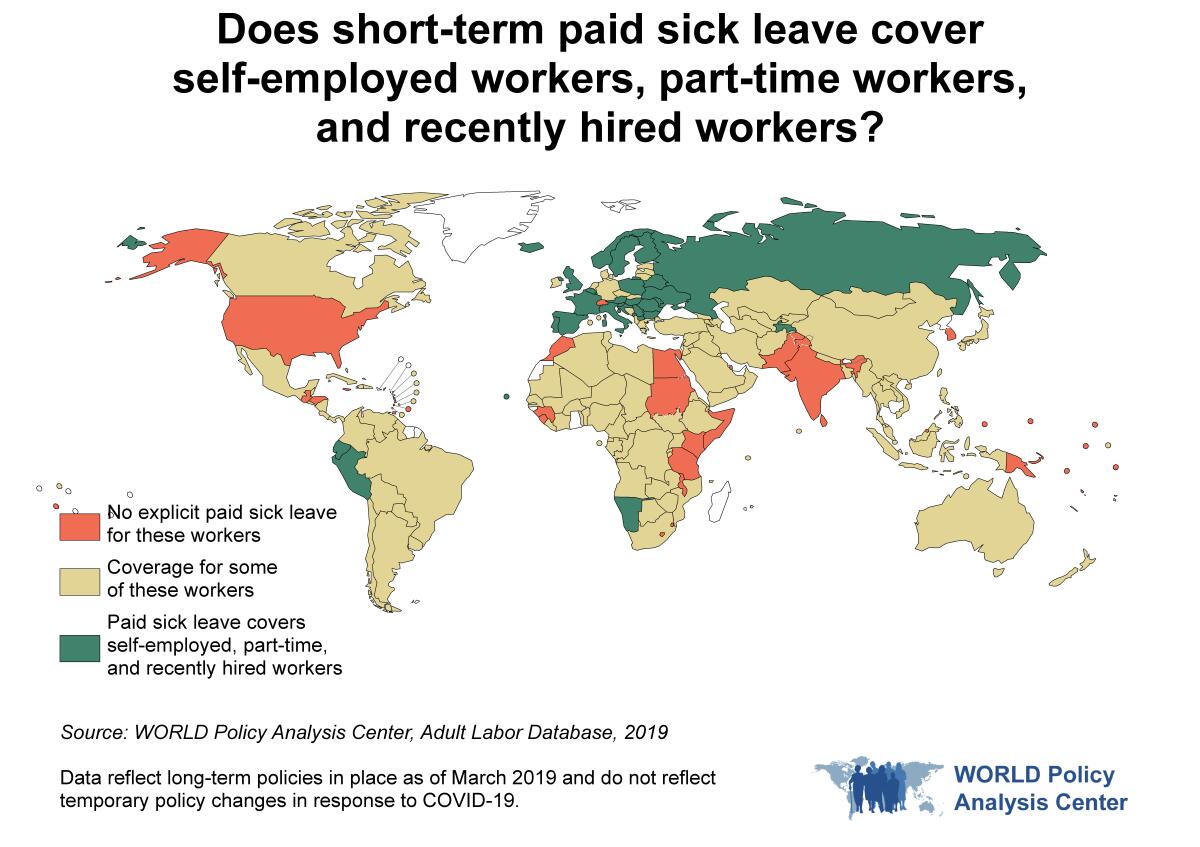
During a pandemic such as the current coronavirus crisis, inadequate paid sick leave almost certainly contributes to calamitous outcomes. Countries that don’t offer paid sick leave from the first day of illness include some that were “hardest hit early in the global pandemic and have faced overwhelmed health care systems and large loss of life,” including Italy, Iran and the U.S., the UCLA study observes.
The U.S. is not the only country, rich or poor, without ironclad, all-encompassing paid sick leave rights. But it’s firmly among the have-not countries in the most important features. About three-quarters of all countries guarantee paid sick leave from day one of an illness and 76% provide for at least six weeks of coverage. Among high-income countries, about two-thirds cover self-employed workers.
About half the countries in the UCLA database guaranteed workers at least 80% of their wages if they had worked for at least six months.
As we’ve reported before, the threadbare safety net for American workers is an artifact of the country’s choice to place workplace policies almost entirely under the control of employers. The harvest is not only spotty paid sick leave rights, but the lack of universal health coverage, both of which have become factors in our inability to put a leash on the spread of COVID-19.
Officials are ‘exploring’ a plan that allows workers to get up to $10,000, but requires them to pay back funds by deferring Social Security benefits.
According to the Bureau of Labor Statistics, about a quarter of all American workers have no right to sick leave at all; about 91% of state and local government workers are eligible for paid sick leave, but only 73% of the privately-employed.
In the private sector, moreover, paid sick leave is a privilege reserved largely for professionals, managers, and the better-paid. It’s available to only about 58% of service workers — who are most likely to come in contact with the public — less than half of those in the lowest 25% of the income range, and only three in 10 of those in the lowest 10% of wage earners.
In the absence of a federal mandate for paid sick leave, states and localities have picked up the slack. Fourteen states (including California) and the District of Columbia have enacted paid sick leave laws, as have 20 cities (seven in California) and three counties.
Typically, these laws require paid sick leave of up to five working days, accrued as workers accumulate hours, and limit the ability to carry sick days into another year. California’s law, which went into effect in 2015, allow employees, including part-time and temporary employees, to earn one hour of paid leave for every 30 hours worked. Employers can cap accruals at 48 hours, or about six conventional workdays.
Starting with President Trump, the GOP is calling to put millions at risk of contracting coronavirusso the stock market recovers.
Without nationwide paid sick leave, the task of keeping people at home to suppress the coronavirus is obviously much harder. “Paid sick days do a few things,” Heymann says.
“When people are out because they are so gravely ill that they would never go to work, they ensure that they have an economic safety net. That’s obviously crucial. But it also means that people who have mild symptoms of infectious diseases, but could readily spread it to others who might get severely ill, will stay home.”
Moreover, “the willingness of people to get tested when they have a mild cough and see if they’re going to need to be out of work for two weeks,” Heymann says, “that depends a lot on paid sick days.”
In fiscal terms, there’s no reason why the United States can’t join the rest of the developed world in offering workers suitably comprehensive sick leave. About a quarter of all countries finance their programs from government funds, and another fifth share the responsibility between employers and government. Low-income countries tend to place the burden solely on employers.
Among high-income countries, two-thirds provide sick leave for the self-employed and 42% cover part-timers.
The consequences of leaving workers without a financial safety net during a health crisis have been clear in the U.S. since the H1N1 flu epidemic of 2009. An estimated 26 million residents were infected from September through November that year, the peak months of the pandemic. But an estimated 8 million continued to go to work.
By the following February, public health authorities reckoned that those carriers infected some 7 million co-workers. “Presenteeism — attending work while ill — among private sector employees without paid sick days may have extended the duration of the outbreak,” a study by Pennsylvania State University concluded.
The lessons of COVID will have to persist well into the future. Not only will the disease likely be with us for at least part of 2021, but it’s a reminder of society’s vulnerability to further pandemics.
In the past two decades, we’ve had four major respiratory infections that spread globally — SARS in 2002, H1N1 in 2009, MERS in 2012, and now COVID-19, Heymann says. “This is not a problem that’s going away. We need to be prepared for the next one, because we can’t afford to have to keep shutting down our economy like this.”
More to Read
Inside the business of entertainment
The Wide Shot brings you news, analysis and insights on everything from streaming wars to production — and what it all means for the future.
You may occasionally receive promotional content from the Los Angeles Times.

